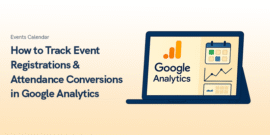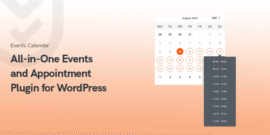
Smart Event Ticket Pricing: Strategies That Sell in 2025
Pricing events correctly is a complex challenge that depends on multiple factors like affordability, competitive positioning, and profit margins.
All while accounting for unpredictable factors like demand fluctuations, venue costs, and shifting audience preferences.
Set prices too high, and you risk alienating potential attendees; price too low, and you undermine profitability, leaving revenue and return on investment (ROI) on the table.
Even minor miscalculations can compound into significant financial setbacks, particularly for recurring or large-scale events.
Fortunately, modern tools are empowering organizers to navigate this challenge with dynamic pricing strategies. One such platform is MEC, which offers flexible solutions as part of the Top 9 Event Management Software to Streamline Your Events.
Features like early bird discounts, tiered ticket variations, coupon codes, advanced revenue reports and group packages offer the tools needed to adapt to market conditions.
By leveraging these tools, event businesses can transform pricing from a static gamble into a strategic lever to maximize ROI.
Understanding the Foundations of Event Ticket Pricing
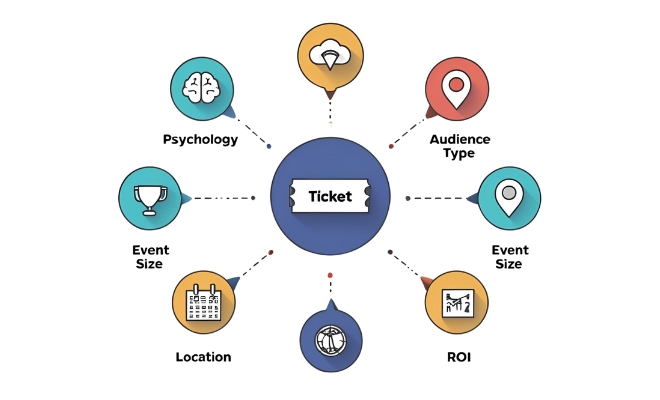
This section explores the psychological, strategic, and logistical criteria that simplifies effective pricing decisions, ensuring events remain profitable while keeping prices competitive.
The psychology of pricing: perceived value, urgency, and scarcity
Human decisions run on emotion!
When it comes to implementing the right strategy, you can use this in your favor.
For example limited-time early bird discounts create urgency, while tiered pricing frames premium tickets as exclusive.

Scarcity tactics (e.g., “Only 10 VIP passes left!”) nudge buyers to act faster, leveraging fear of missing out (FOMO) to achieve ticket sales optimization.
Pricing goals: profitability, attendance maximization, or brand positioning
Premium pricing positions your brand as exclusive or luxurious, making it more appealing to certain audiences, but it can risk low turnout.
That’s when hybrid models, like dynamic pricing, let you pivot mid-campaign to ensure profitability.
Dynamic pricing strategies aren’t just theory: some studies show they can boost event revenue by 10–20% or more, with every 1% price increase potentially adding 8% to profit margins
When you're in the middle of a campaign and things aren't going as planned (e.g., low ticket sales), you can simply lower the price to adjust your strategy with a simple discount.
Always leave some room in case you have estimated your ROI a bit too high.
Factors that affect pricing: audience type, event size, location, timing
A tech summit in San Francisco may command higher prices than a local art fair.
Off-peak dates benefit from last-minute deals, while loyal audiences tolerate gradual hikes.
These are valuable hints on the importance of paying attention to different variables.
Use advanced event registration tools to segment your audience while playing with the variables to find out what your audience is into.
For example, you can create an event registration form in WordPress using Modern Events Calendar to gather relevant data and preferences.
If you are not making enough, consider changing venues, make sure your events are attractive to a wide range of audience, keep an eye on your ticket sales at different times during the year.
All these tactics can improve your sales to get you where you want.
Popular Event Ticket Pricing Models (With Pros & Cons)
Let’s break down popular frameworks, helping organizers match models to their event’s scale, audience diversity, and long-term vision.
No single model fits all events, flexibility is key.
Let’s take a look at some of the pros and cons of each strategy:
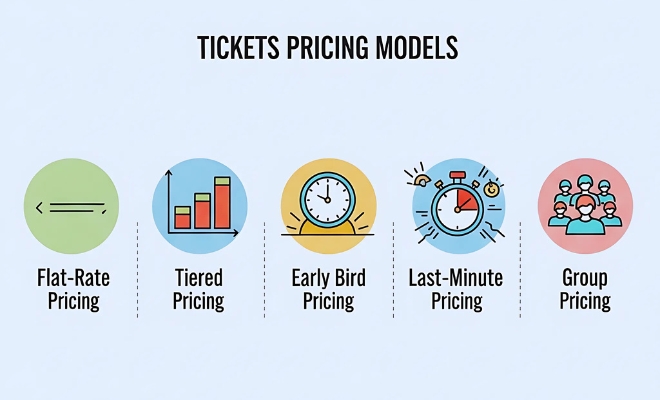
Flat-rate pricing
Tiered pricing
Early bird discounts
Last-minute deals
Group/family bundle pricing
If you're looking to set up different pricing models for your event, make sure your website is ready. Here's a guide on how to create an event website with WordPress in 8 easy steps to help you get started efficiently.
Comparison Table
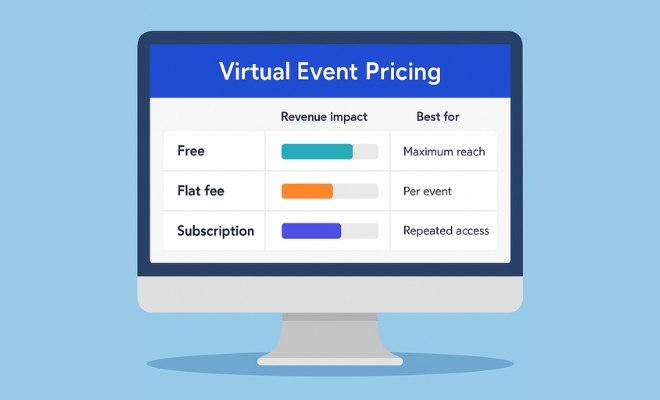
A quick reference shows flat-rate suits simplicity-focused events, tiered maximizes revenue for multi-day conferences, early bird stabilizes cash flow, last-minute rescues low-demand dates, and bundles drive volume.
| Model | Best For | Revenue Impact |
| Flat-Rate | Simple events like workshops, webinars, or local festivals. | limited flexibility for maximizing revenue |
| Tiered | Conferences, concerts, or expos with VIP or premium experiences. | Higher potential revenue |
| Early Bird | Popular events needing early commitment, like tech summits or limited-capacity retreats. | Boosts early cash flow |
| Last-Minute | Large-scale events with flexible capacity, like festivals or theatre shows. | Fills empty seats but may undercut perceived value |
| Group | Family-friendly events, school trips, or team-building experiences. | High volume |
Match models to audience behavior and event goals and the formula is in your hands!
Common Pricing Mistakes to Avoid
Even seasoned organizers can fall into pricing traps that erode revenue and trust.
This section outlines common errors, from undervaluing events to neglecting mobile UX
Even small errors can cost thousands in lost revenue.

From undervaluing experiences to ignoring mobile users, missteps erode trust and profitability.
Another overlooked factor is SEO optimization—using an event plugin that helps with search visibility can go a long way. Check out these tips on how to boost event visibility with MEC’s top SEO features.
Here’s how to sidestep pitfalls.
Undervaluing your event
Charging too little harms perceived quality and cuts into margins.
Use competitor benchmarking and attendee surveys to set confident prices that reflect your event’s unique value.
Not offering enough pricing options
A single ticket tier excludes budget-conscious attendees and luxury seekers.
Balance inclusivity and profit with 3–4 tiers, including early bird discounts and payment plans.
Setting pricing without audience data
Guessing budgets leads to mismatched prices.
Use event registration tools to poll past attendees or A/B test prices for new events.
Poor mobile user experience for checkout
48% of buyers use smartphones, clunky forms or slow load times kill conversions.
In fact, mobile-optimized checkouts can see conversion rates rise by up to 160% compared to non-optimized ones, while desktop conversions average 5.39%—underscoring the impact of streamlining the mobile journey with fast-loading, responsive designs.
Optimize checkout pages and test mobile UX rigorously.
Leveraging Advanced Tools to Optimize Ticket Pricing
What we learnt so far about different pricing and marketing trends is all fun and dandy, but how can we implement them in real life?
Now it’s time to learn how advanced tools can do just that.
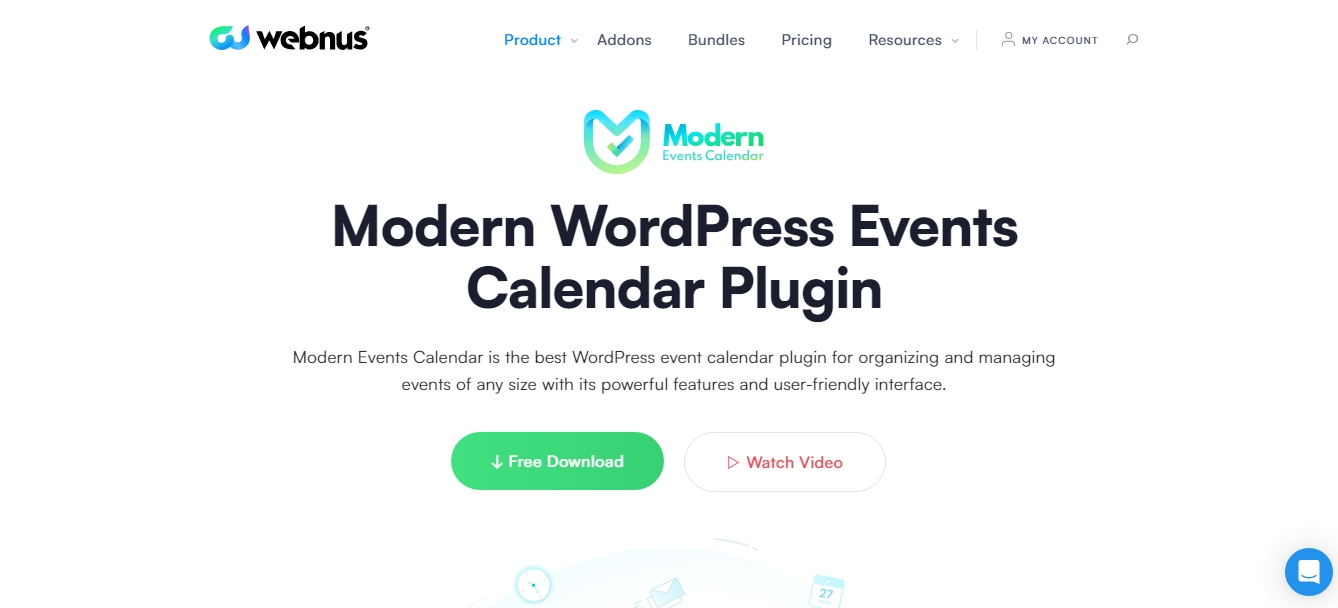
Modern Events Calendar has all the tools mentioned above and more to help you choose the right strategy and help you along the way by providing practical feedback.
If you're not familiar yet, here’s how to use Elementor with Modern Events Calendar to design beautiful and functional event pages.
Let’s dive in!
Analytics and Real-Time Reporting
MEC’s analytics capabilities allow organizers to gain real-time insights into key metrics such as conversion rates, peak purchasing times and refund frequencies.
For context, AudienceView found that live event organizations using optimized ticket experiences average 12.6% online conversion rates, with the top quartile reaching up to 20%—showing the real potential of data-driven enhancements.
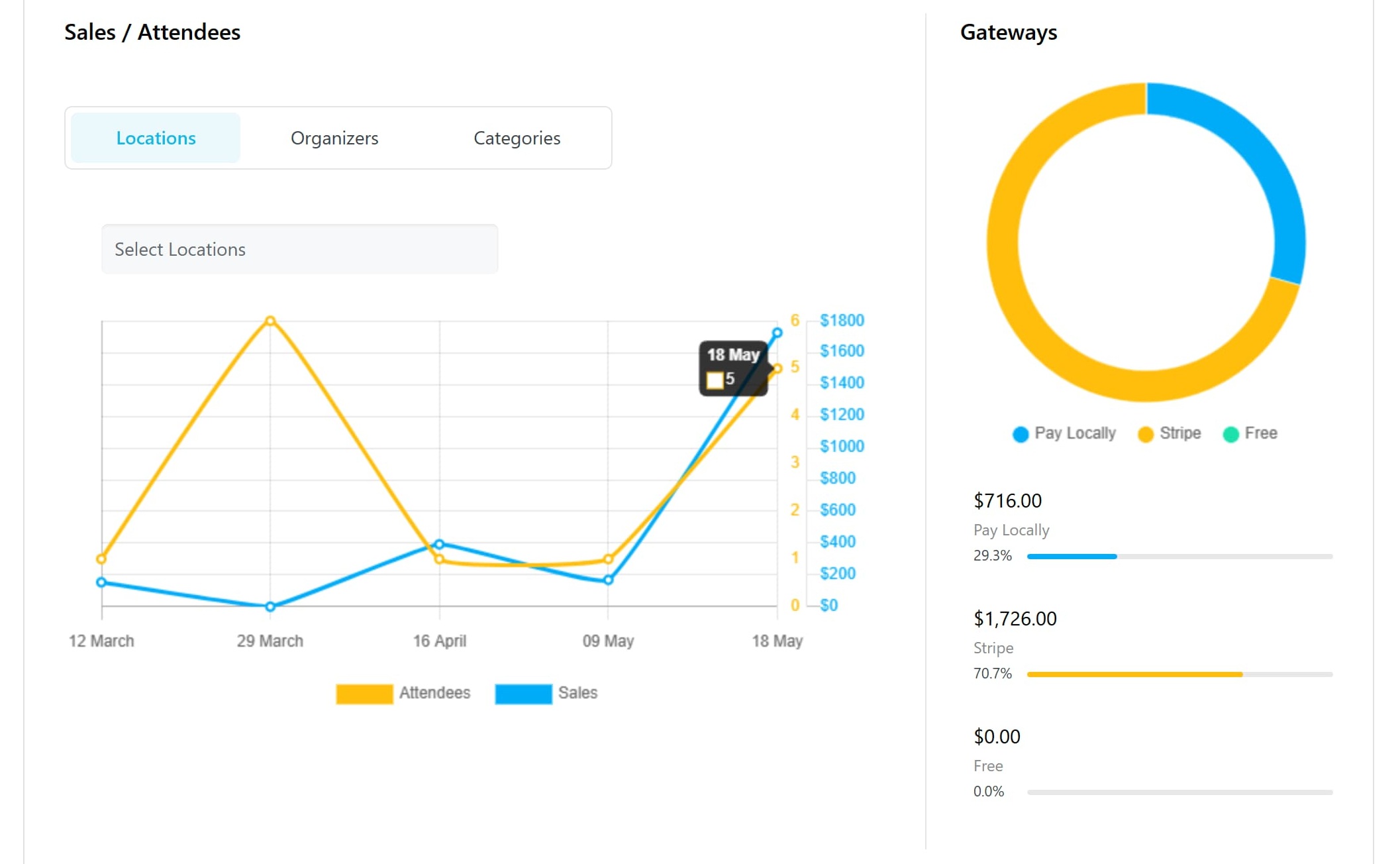
Through the Advanced Reports addon, you can generate visual diagrams and filtered reports based on categories, organizers, and locations.
This not only helps refine ticket pricing strategies but also identifies which campaigns and pricing structures bring in repeat buyers or higher income per attendee.
Ticket Variations & Pricing Rules
With MEC, event organizers can create unlimited ticket types with flexible pricing.
You can implement rules like automatically increasing prices after a set number of sales or offering family tickets with seat-based pricing.
Add-ons such as merchandise or replays can be priced independently, and countdowns can be set to add urgency.
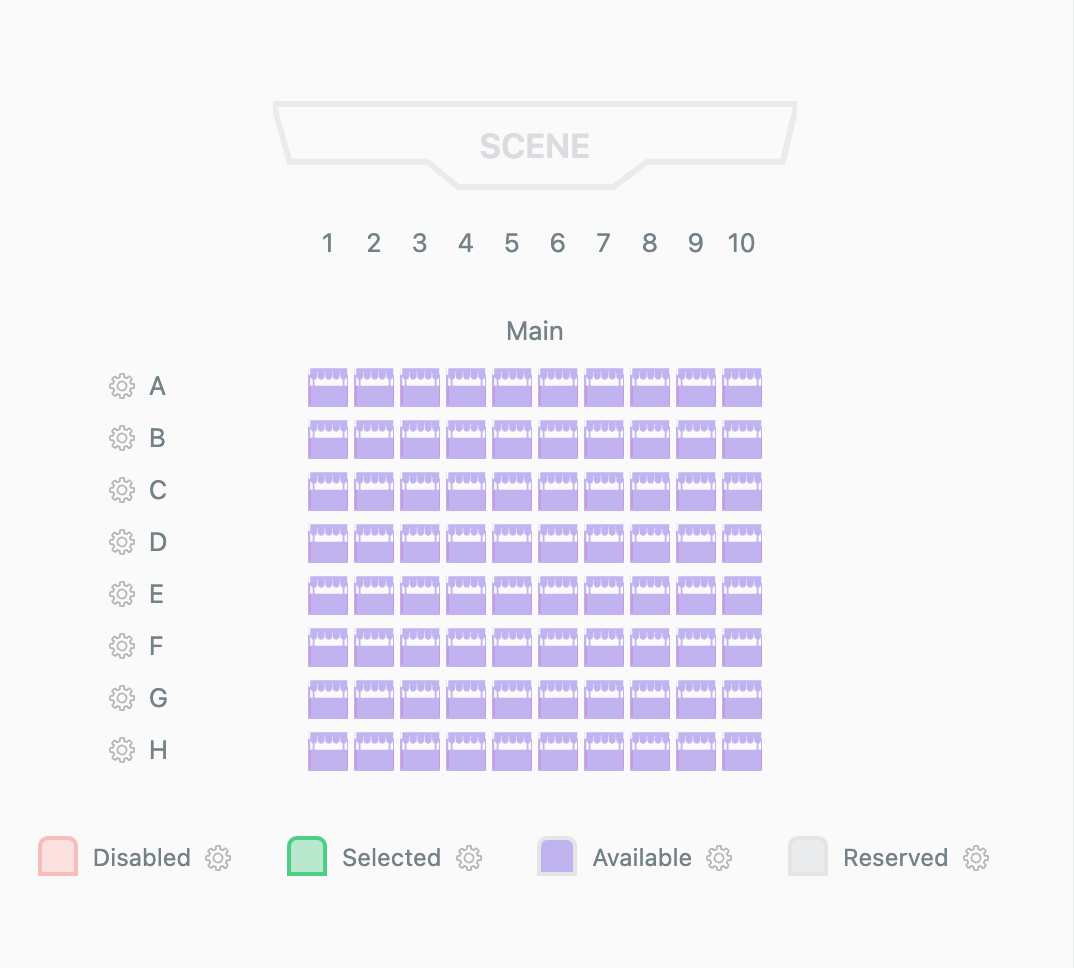
You can even use MEC’s Seat addon to give attendees the possibility of picking their seats from a layout with various pricing and ticket type possibilities.
These pricing rules give organizers granular control over revenue strategies and buyer segmentation.
Integration with Email Marketing for Pricing Promotions
Modern Events Calendar integrates smoothly with platforms like Mailchimp, allowing users to run targeted pricing campaigns.
If you're exploring email marketing tools for your event promotion, here are the top 5 email marketing tools for event promotion to consider.
You can send out emails that highlight upcoming events, offer loyalty discounts, or reward social media shares with promo codes.
Combined with MEC’s CRM capabilities, this integration can help you run email campaigns to generate the most purchases, making it easier to tailor promotions.
Custom Registration Forms for Tracking Buyer Behavior
MEC’s customizable registration forms help organizers capture rich behavioral data at checkout.
You can ask attendees any information, categorize them, and even collect this info for your future campaigns.
These insights allow you to optimize marketing funnels, retarget high-value channels, and segment follow-ups based on buyer intent, origin, or demographic attributes.
Marketing Automation and Reminders
Through MEC’s automation capabilities, you create email notifications for reminders and sending out event updates.
These features reduce manual effort while increasing the precision of your campaign timing, enabling continuous refinement of your outreach and pricing strategies for maximum conversion.
Early Bird Ticket Sales
Modern Events Calendar (MEC) makes early bird ticket sales easy to configure and highly effective for driving urgency and early conversions.
You can create time-sensitive discounts with automatic, ensuring that discounted pricing will be applied to tickets for early bookers.
These automated functions help boost early commitment and improve revenue.
Final Checklist: Building a Winning Ticket Pricing Strategy
Follow these steps to align prices with goals, tech, and audience needs, no guesswork required.
Download MEC to automate pricing rules, track ROI,
and scale your event revenue growth without overwhelm.
Conclusion: Smart Pricing Is a Game-Changer
In 2025, adaptability separates thriving events from forgotten ones.
A refined Event Ticket Pricing Strategy, powered by dynamic pricing, AI-powered ticketing, and relentless audience focus, turns attendees into advocates and organizers into innovators.
With tools like Modern Events Calendar, you’re not just selling tickets; you’re crafting unforgettable experiences that grow year after year. To see how AI can further revolutionize your strategy, explore these best AI tools for event planners & businesses.

